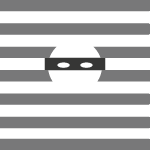Self-assessment
Know your abilities and possibilities
Welcome to the self-assessment
Please select the areas that you are interested in

Assertive communication
Assertive communication
Aims and Learning Objectives
This module contains information about assertive communication, what it means, how we can acquire the quality of assertive communication through communication techniques, and some examples corresponding to each technique in order to understand more easily, and to be able to apply easily the proposed techniques.
The activities carried out within the prison system largely involve communication between different people, between colleagues, between staff and prisoners or between staff and people outside the prison. That is why we consider this subject, that of communication, to be very important and we think it is important to use an assertive communication style.
The content of this module is composed of 3 lessons, through which we will acquire sufficient knowledge to communicate assertively.
Section Titles
What is assertive communication?
How can you be assertive?
Assertive communication techniques
Estimated Duration
1 Hour

Deconstruct the gender stereotypes
Deconstruct the gender stereotypes
Aims and Learning Objectives
This module will introduce you to the concept of gender and gender stereotypes. Specifically, there is a first part that has an explanatory function, clarifying gender-related concepts. The second part, on the other hand, seeks to highlight the female perspective, focusing on the relevance of gender and the barriers and challenges that arise. Once you have become aware of these concepts, they will be applied in the last part, prompting the reader to the moment of action. The module does not aim to exhaust the topic, but rather to carry out practical activities that can stimulate a constructive dialogue between colleagues, encouraging further research.
Section Titles
Gender stereotype: some basics to start
Inside women perspective
Which are the limits that female officers experience in the penitentiary system?
Gender mainstreaming strategy
Estimated Duration
2 Hours 20 minutes

Digital skills for correctional staff
Digital skills for correctional staff
Aims and Learning Objectives
The world of today is the world of digital. More and more aspects of our lives are influenced and depend on digital: communication, education, health, commerce, house management. The today prison daily life is more and more relayed on technology: from security devices till online management tools and different rehabilitation programs for inmates. Most of the correctional staff have the basic necessary skills as digital citizens which allow them to operate at a certain level but, while working, the technology develops and there is a clear need to keep up with. Also, looking to different prison services we can notice that the level and type of technology used is different but there is a clear tendency to relay more on digital technology in the future.
Section Titles
Reasons of using digital technology and Types of digital means used in prison services
COVID challenges – versus digital world in prison settings
Digital technologies in the penitentiary system – their use and benefits for detainees and prison staff
Estimated Duration
1 Hour

Mental Health Survival Kit
Mental Health Survival Kit
Aims and Learning Objectives
One of the most damning obstacles in prison is the constant battle to preserve your sanity in a cold, harsh and ruthless environment. The severe prison atmosphere may aggravate existing mental health issues, increase violence, and enforce insecurity and solitude. You literally must be constantly on guard. For some, this is where they live. For you, this is where you work.
While prison stressors are psychologically destructive and demoralizing to inmates, they are equally real to the line staff in the same environment. Most of these factors are inevitable within the majority of prisons and can be very harmful for people constantly exposed to them, causing mental health disturbance.
Do you relate to this? Well, you have two options then: you can either live with it or act on it.
It’s time to prioritise your mental health and the ones who depend on you – Do you want to know how? You are in the right module!
Section Titles
Mental Health in Prison Staff
1. Mental Health Awareness
2. Anxiety
3. Post-Traumatic Stress Disorder (PTSD)
4. Managing anger & Resolving Conflicts
5. Strategies to balance work challenges with family and personal time
6. Alcohol and drugs related to work pressure – A miracle worker?
7. Referral practices and resources
8. Developing an Action Plan
Mental Health of Prisoners
1. Duty of care: Recognising common mental illnesses in prisons
2. Recognising factors in prisons which exacerbate – or cause – mental health issues
3. Developing a ‘whole-prison’ response to mental health awareness
4. Prisoners’ perceptions of mental health support in prison
5. Families and partners of prisoners
6. Mental wellbeing, preparation for release and through-the-gate mental health care
7. Mental Health Awareness Champions: managing change in your prison
8. Further resources for mental health capacity building
Estimated Duration
Up to 4 Hours

Organized crime and gangs
Organized crime and gangs
Aims and Learning Objectives
In this module, you will be introduced to information on organised crime. Specifically, you will briefly learn about various organised crime elements and the institution of gangs. In addition, this module aims to play a role of a conversation starter on an overall broad and complex topic. The specific issues presented in the module were selected to create a smooth flow of knowledge that stimulates a desire for further learning. As a correctional staff member, after studying the presented module, you will gain a basic idea of organised crime processes and complexity. New knowledge can also contribute to more critical thinking in your work and daily activities and change the approach towards inmates.
Section Titles
Introduction to organized crime
Smuggling of migrants
Drug trafficking
Firearms trafficking
Human trafficking
Environmental crime
Counterfeit products
Maritime piracy
Cybercrime
Women in organized crime
Gangs – what are they?
How does a person become a gang member?
What functions can the gang members have?
Estimated Duration
3 Hours

Self confidence
Self confidence
Aims and Learning Objectives
This module contains information about self confidence, what it means what is the difference between self-confidence and self-esteem and some usefull tips on how to trust yourself. We consider that self-confidence it’s very important for a person that is it working in criminal correctional justice system.
The content of this module is composed of 3 lessons, through which we will acquire sufficient knowledge about self-confidence.
Section Titles
Self-confidence and self-esteem
The importance of confidence and self-esteem in our lives
How to trust yourself
Estimated Duration
1 Hour

Stress management
Stress management
Aims and Learning Objectives
The content of this module is about stress and how we can manage it better. As an employee of the penitentiary system you will often be faced with more or less demanding and stressful situations. Not infrequently stress management skills will make your job easier.
We, as developers of the module, thought that this topic, stress management, should be addressed, as it is of great interest to employees in the penitentiary system, and we hope it will be of interest to you as well.
The content will be structured in several lessons in order to make it as easy as possible to go through it and acquire the necessary knowledge.
As a result of the time spent studying the materials provided by us you will gain knowledge in the field of stress management, which will be useful in your daily work in the prison system.
Section Titles
Definition of stress
Fundamental types of stress and theories of stress
Occupational stress
Practices and exercises to reduce professional stress in prisons
Estimated Duration
1 Hour


